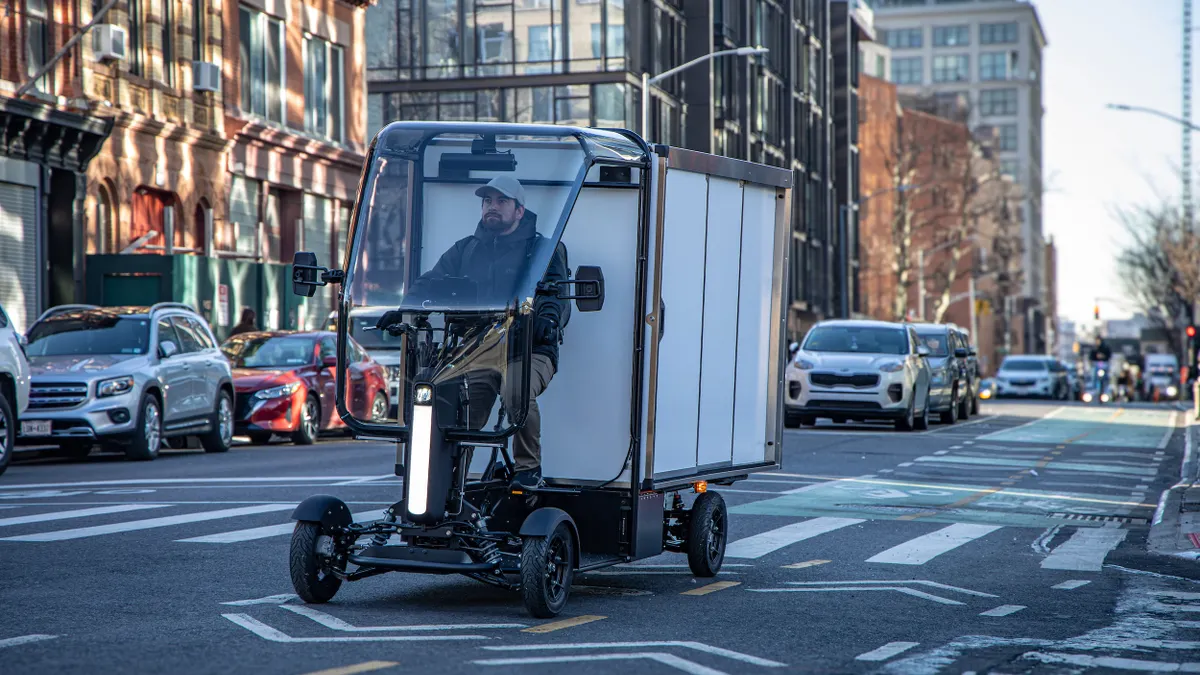Dive Brief:
- Taiwanese manufacturer Foxconn has requested that Wisconsin include an autonomous vehicle (AV) lane as part of the $3 billion benefits package it is receiving for investing $10 billion in a flat panel display factory there, according to BizTimes Milwaukee.
- The driverless car lane would be part of an Interstate 94 expansion authorized by the same legislation that approved FoxConn's tax credits and other breaks. Wisconsin's Transportation Department said Foxconn could use the AV lane to shuttle its products to and from the airport, and to provide easy transport for its employees.
- The I-94 project is contingent on federal funding to complement the $252.4 million that lawmakers pledged for the expansion. State transportation officials said they have submitted an application to the federal government to assess the resources needed to procure an AV lane.
Dive Insight:
As states and municipalities across the nation work to bring their infrastructure up to today's standards, some are looking ahead to what the smart infrastructure of the future could look like.
Earlier this month, Las Vegas began running the nation's first autonomous shuttle to operate on public roads. The vehicle showed promise with its LiDAR technology, using GPS, cameras and sensors to help it navigate around vehicles and other obstacles, along with its vehicle-to-infrastructure systems. Soon after it began running, however, the shuttle experienced its first fender bender.
Though the emerging technology likely has more growing pains ahead, states are beginning to invest in the idea that smarter vehicles and the roads beneath them aren't too far off.
Florida's Department of Transportation updated its plans for the $750 million addition to the Howard Frankland Bridge between St. Petersburg and Tampa so the span could accommodate a light rail and AV lanes in the future. Tampa is also running a connected vehicle test program that will outfit approximately 1,600 private vehicles, 10 buses and 10 streetcars with equipment that will measure metrics like speed and braking distance, and other driving data to improve safety.
Perhaps one of the biggest roadblocks to honing the technology has been a lack of federal guidelines directing states' role in AV regulation and development. In September, the U.S. Senate issued voluntary guidelines for connected and autonomous vehicle (CAV) technology in an effort to establish that role and to provide guidance for private companies in their development of such technology.










